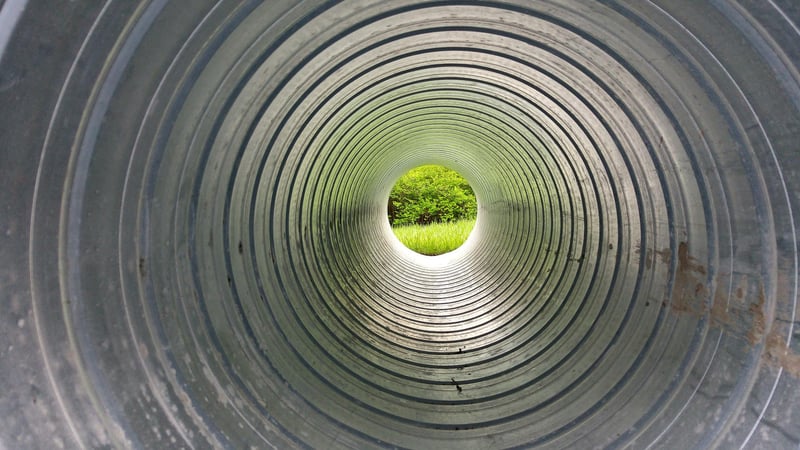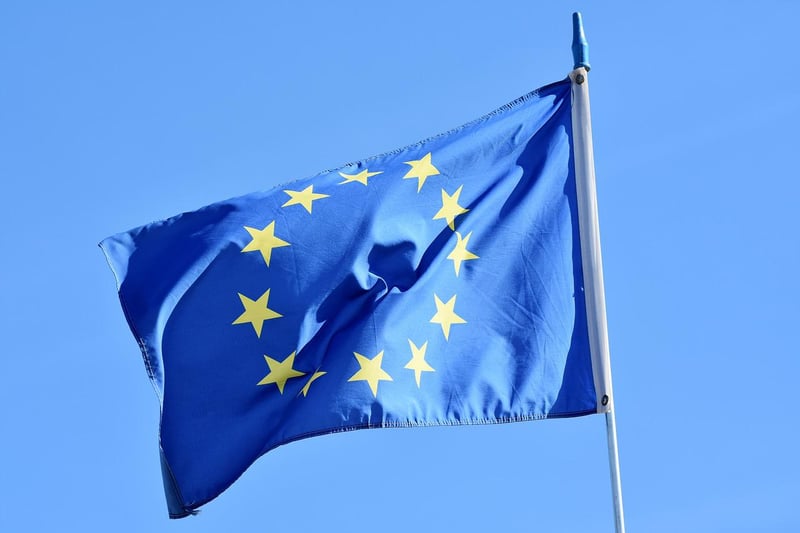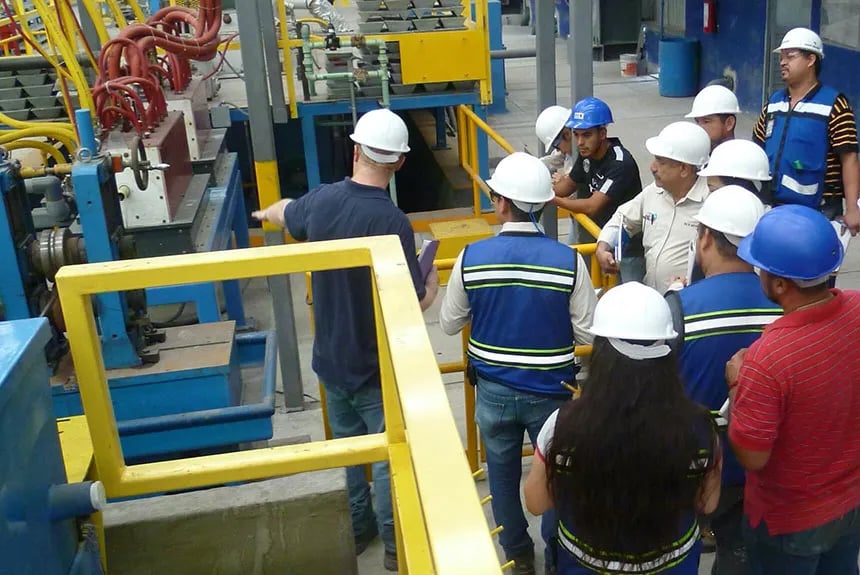
With many industries - most prominently the automobile industry - touting new initiatives for carbon emission-free production sites, self-sustaining factories or improved recyclabilities for their products, green manufacturing and SDGs (Sustainable Development Goals) have become more than just temporary buzz words, but a global shift towards more efficient and less polluting manufacturing of goods. More and more state regulations are implemented globally, providing subsidies for switching to - or building - newer manufacturing technologies with less emissions and energy requirements, while other regulations punish outdated high-emission production with higher taxes. This global trend provides companies with the opportunity to update their technologies which may have been neglected for many years.
A review on galvanizing processes
The galvanizing technology landscape is not very broad, and we have explained many details and differences of the three prevailing galvanizing processes there are. Excluding the electroplating process, which is only used for special applications of fine-detailed products and is not economically feasible for volume production, the two most common types of galvanizing are hot-dip galvanizing and continuous galvanizing, the latter being used for pre-galvanized steel coils. In hot - dip galvanizing, steel products are being submerged into different baths for surface preparation, galvanizing, cooling and secondary coatings. With continuous galvanizing, the steel is being run through similar baths continuously, and only becomes a lotted product at the end of the process by coiling, cutting or similar. Secondary steel sheet production would then use pre-galvanized steel sheet coils to produce galvanized products and re-seal welded areas, where applicable. In-line galvanizing, the third scalable galvanizing process available, is similar to continuous galvanizing in that the product runs through each process continuously. The difference here is that the steel is formed into a tube and fully galvanized between the forming and sizing section of the mill base in a continuous process. Here, the production can include one or two galvanizing stations to achieve different kinds of galvanized products in one manufacturing line setup.
How green is galvanizing today, and where are the hurdles?
The three galvanizing processes take different engineering approaches on how to achieve a galvanized product. However, the sub-processes required for galvanizing are essentially the same for all of them, which makes them comparable for efficiencies, consumption and emissions. For example, all processes require various liquids for surface preparation, cooling and secondary coatings, and a bath of molten zinc in order to achieve the galvanizing.
Many studies in the past have focussed on evaluating the life-cycle of galvanized steel products, and proposed values on the GWP (Global Warming Potential), "gray energy" and carbon footprint of the processes' energy consumption and emissions. These studies would often conclude that hot dip galvanizing is a highly sustainable process in regards to the lifetime and recyclability of the end product. While this does not seem to be untrue, little emphasis can be seen on the need to innovate and invent new methods of cleaner and more efficient galvanizing. This can also be observed in the development of the technology over the past decades. Molten zinc bath insulations have been improved, waste heat reuse and recovery have been implemented in some areas, and fume emission filtering has become more effective and energy efficient. Many of these improvements, however, are either cost driven or motivated by state regulations.
Case: China's Energy Consumption Regulations

In order to bring down its carbon emission to a peak by 2030 and reach carbon neutrality by 2060, China has been laying out stricter rules for companies and provinces to help achieve those goals in 2021. The central government set limitations on energy demands for provinces and forced them to review all of their respective projects and industries for alignment of these newly implemented policies. In effect, 20 out of 30 regions in China failed to achieve this alignment which prompted the central government to impose stricter rules with penalties for non-conformities. Companies that did not meet the new standards were either fined, cut off from electricity or forcefully closed. The fines made a deep cut into the profitability of the companies, especially the crude steel industry with its high energy demand, leading to temporary closings, production output reductions and some companies having to close shop. As China pursues its ambitions for better air quality by stepping away from coal, and reducing its energy demand, extreme measures of optimizations and efficiency improvements will need to be taken by companies and industries down that road.
Case: EU's Carbon Border Adjustment Mechanism (CBAM)

The EU already has among the strictest environmental regulations worldwide, which along with the high wages and tax has made many industries and companies to consider outsourcing or relocating production and operations overseas. These economic dynamics are undermining the EU's effort to achieve its ambitious target of a 55% reduction in carbon emissions compared to 1990 levels by 2030, and to become a climate-neutral continent by 2050. Furthermore, EU consumers are making good use of the globalized economy by buying products cheaply from overseas, where different - often lax - environmental regulations are in place. To help reduce the risk of carbon leakage by encouraging producers in non-EU countries to green their production processes, the EU will soon implement a mechanism called CBAM (Carbon Border Adjustment Mechanism), which some refer to as a carbon import tax. With CBAM in place, EU importers will buy carbon certificates corresponding to the carbon price that would have been paid, had the goods been produced under the EU's carbon pricing rules. While this new far-reaching legislation will be implemented in phases, iron and steel products are among the first group of products that will be required to adjust carbon emission prices. Strong effects on prices in the EU for imported steel are to be expected. This will also negate many past efforts manufacturers have been doing to reduce cost by avoiding making efficiency -and sustainability upgrades to their manufacturing process.
Opportunity for efficiency
As external pressures on reducing carbon emissions from manufacturing and transport of products are increasing, and are expected to increase until the global warming crisis has eventually been reversed, opportunities arise on all fronts of modern manufacturing. For the galvanizing industry, a first step could be a switch towards already available efficient production methods, as many manufacturers around the world still rely on the hot-dip galvanizing process. These manufacturers are expected to feel the external pressures coming from policy makers first, if they are not already feeling them. For galvanized tubes, for example, a switch to InLine Galvanizing (ILG) has many benefits towards efficiency and emissions. Hot-dip processes require the product to be completely immersed, which means the process tanks must be equal to or larger than the maximum tube length. This means that the volume of acid, neutralizers and flux required to immerse the tube is significant. This volume of chemicals increases the adjustments needed, the management of material handling and storage, and eventually the disposal costs. Not to mention the environmental consideration of controlling the process fumes.
With the InLine Galvanizing process we can minimize the capacities of process chemicals to a fraction of the quantities required by a hot-dip process. We can also eliminate the use of flux (zinc ammonium chloride) which is considered an environmentally hazardous material and produces the highest fraction of all emissions.
Opportunity for Smart Factory Solutions
For most modern galvanizing processes, some form of automation is already being done by automating sub-processes and linking up different equipment stations with each other to enable smooth operations. This automation, however, is mostly done by pre-programming of machinery before and during the installation of the manufacturing line, with many instances of post-installation adjustments towards customer requirements. As such, operation ratio, production yield and labor intensity are matters of how good these settings are made initially, and how quick operators and management are able to react to changes in situation and changes of customer requirements. By automating optimization and adjustment processes, Smart Factory Solutions are the key in increasing the efficiency of galvanizing production lines beyond what humans are capable of. Industry 4.0 and Industrial IoT (IIoT) are not new terms in any regards, but the galvanizing industry has - so far - received little-to-no attention from machine learning (AI) system integrations, which makes for great potential of increasing the sustainability of the galvanizing process.
To learn more about galvanizing industry and related topics, kindly sign in for email updates or feel free to get in touch with us.
Resources:
Reuters - China state planner vows crackdown on projects with high energy use
European Commission - Carbon Border Adjustment Mechanism: Questions and Answers
Galvanizing - Special - Sustainability (Ger)
NSCEP EPA - Emissions From Hot - Dip Galvanizing Processes : Final Report




